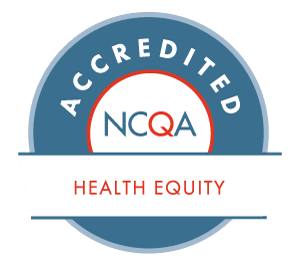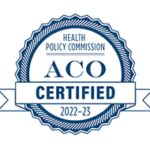
By: Crystal Adams
This year, we launched an In-Home Primary Care pilot program as part of a strategic initiative to extend the reach of Federally Qualified Health Centers (FQHCs) beyond their walls. This program aims to provide comprehensive care for patients with multiple chronic conditions and/or disabilities within the comfort of the patient’s home. Two pilot sites—the Community Health Center of Cape Cod and Greater Lawrence Family Health Center (in partnership with Feltin Community Care) are implementing this project over the next two years.
Through this innovative care model, the two nurse practitioners (NPs), Rayane Salerno and Alex Weiner, and RN Tammy Andrews serve as the medical providers and the hub of the care team, providing both routine and urgent care, conducting health and social screenings, and coordinating with a wide array of specialists. The goal is to reduce emergency department (ED) visits and unplanned hospitalizations by offering patients who have complex needs the kind of accessible care that assures they don’t get lost navigating the traditional healthcare system.
But while the structure of the program is important, the true value lies in the on-the-ground experiences of the providers delivering clinical care in the home who are the linchpins to its implementation. We conducted in-depth interviews with the three providers involved. Their feedback highlights the lessons learned from the first six months of the program.
Key Insights from the Nurse Practitioner Interviews
1. Faster Response Times and Improved Access
A key benefit of this in-home care model is the ability to respond quickly to patient needs. Compared to traditional healthcare settings, where patients often experience long waits for appointments, the approach allows providers to address issues more promptly, which has had a significant impact on patient satisfaction.
“Most of the time, I respond the same day or the next day,” one provider shared. “Patients have told me it’s much easier to have me come to them, especially when transportation or physical limitations make it hard to get to the office.” This rapid response has made a meaningful difference for patients who might otherwise face worsening conditions before getting care.
Another provider mentioned, “We’ve been able to meet patients’ needs within the same day or at least the next day, and that’s something they don’t usually experience with traditional primary care.” This faster response has been particularly critical for patients with chronic conditions, ensuring they get timely interventions to prevent their health from worsening.
2. A Focus on Chronic Disease Management
Providers have been able to integrate elements of chronic disease management in the delivery of care. This focus on managing existing illnesses is one of the key areas where providers have had a notable impact.
One provider explained, “We’ve been seeing good progress helping patients control their blood pressure and diabetes. It’s not so much about preventing the onset of new illnesses as it is about stopping current conditions from worsening.” This hands-on, patient-centered care has made a noticeable difference in the health outcomes of many participants.
“Many of our patients have acute issues, and we’re primarily addressing those,” said one provider. “But we’re also able to educate them on managing their chronic conditions like hypertension and diabetes to keep things from getting worse.” For example, providers have helped patients avoid hospitalizations by quickly adjusting medications when symptoms of heart failure or other chronic issues arise.
3. Building Trust and Educating Patients
A major theme that emerged from the interviews was the importance of patient education and trust-building. Providers have the time to sit with patients, explain their health conditions, and answer questions in ways that are often not feasible in traditional care settings. This time and attention have led to stronger relationships between providers and their patients, resulting in improved health literacy and compliance with prescribed treatment plans.
“Patients and their families frequently tell us that no one has ever explained things to them this way before,” shared one provider. “We have the time to sit down and make sure they understand their diagnoses and medications. The feedback has been overwhelmingly positive.” Another provider echoed this sentiment, explaining how patients express gratitude at the end of visits: “Every time we leave, they say, ‘Thank you so much,’ and they seem genuinely more comfortable with their care because they understand it better.”
This deeper level of engagement has also translated into better adherence to treatment plans. “We’ve seen an increase in compliance with blood pressure monitoring and medication usage,” noted one provider. “One patient who had been resistant to insulin is now taking it regularly after we spent time educating him on how to use the pen and why it’s important. That kind of progress is really rewarding.”
4. Care Coordination: Developing Clinical Relationships
Coordinating care between other providers, such as primary care physicians (PCPs), specialists, and the in-home care team, has seen significant improvement since the pilot began. Early on, there was misunderstanding over the role of the in-home care providers in managing patients’ care, but regular meetings with PCP teams have helped clarify these responsibilities.
“At first, there was confusion about who was handling labs and referrals, but now that we’ve had meetings with the PCPs, things are much smoother,” said one provider. “We’re now listed in the care team, which has helped a lot with communication.”
However, some challenges persist, particularly in coordinating care with specialists. “There are still issues when it comes to getting specialists to respond to our inquiries promptly. It’s frustrating at times, but overall, the care coordination has been improving,” one provider explained.
5. Program Effectiveness: Meeting Patient Needs
The providers consistently expressed their belief that the in-home care pilot is making a positive impact on patients’ lives. For many homebound individuals, the ability to receive care at home is transformative, both in terms of health outcomes and overall quality of life.
“Patients often tell us how much they appreciate having someone come to their home,” one provider said. “One patient’s daughter told me she had been waiting for a program like this for years because her mother couldn’t leave the house. It’s really made a difference for them”.
The holistic nature of in-home care—where providers can assess the patient’s living conditions, social supports, and health needs all at once—offers a level of care that simply isn’t possible in traditional clinic settings. “By being in their home, we can see things we’d never notice in a clinic. We can see their environment, what kind of support they have, and what barriers they face. That insight helps us provide better care.”
Conclusion:
The In-Home Primary Care Pilot has demonstrated that providing care in patients’ homes offers distinct advantages over traditional healthcare models, particularly for individuals with complex, chronic conditions. Through faster response times, personalized patient education, and improved care coordination, the in-home care providers are making a tangible difference in the health and well-being of their patients.
While the pilot is still in the early implementation stage, results so far show that it’s a valuable model for reaching patients who otherwise might struggle to access the care they need. As one provider put it, “This program has been a lifeline for so many patients. It’s not perfect, but it’s working, and it’s only going to get better as we continue to refine it.” With continued dedication and innovation, the In-Home Primary Care Pilot is poised to become a cornerstone of care for vulnerable populations in the years to come.





